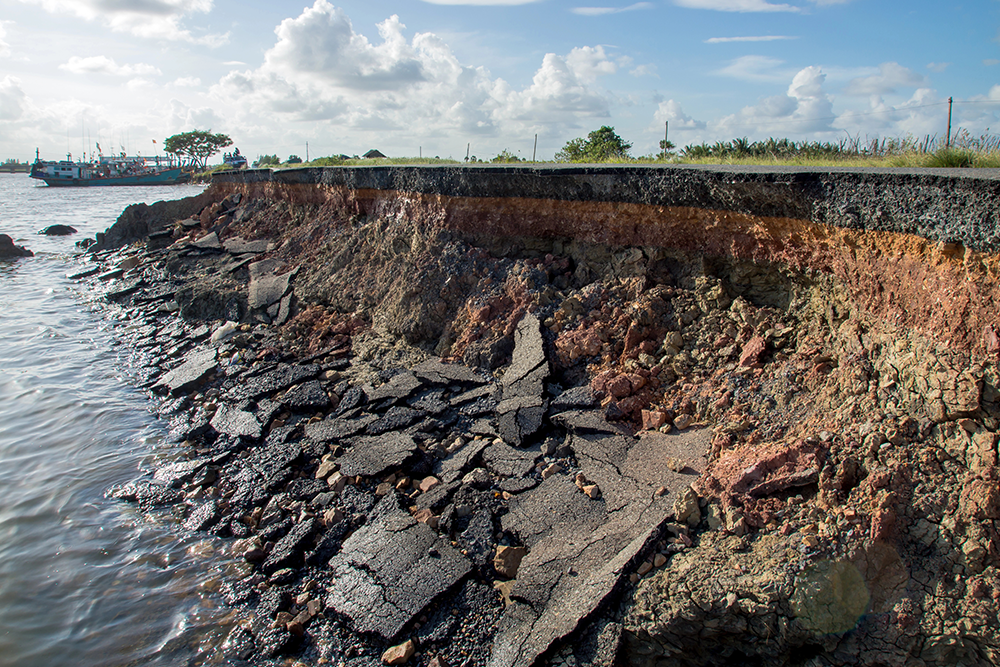A Guide To Creating An Effective Erosion Control Plan

Managing soil erosion is essential for minimizing environmental impact and guaranteeing compliance with local regulations. An erosion control plan outlines a strategy to mitigate soil loss and sedimentation, which can harm waterways and degrade land. These plans provide structured solutions to control soil displacement due to wind, water, and other factors, safeguarding both the construction site and surrounding areas.
We specialize in developing tailored erosion control strategies at Coleman Environmental Engineering, LLC, that prioritize environmental sustainability and long-term project success.
What Is an Erosion Control Plan?
Such a control plan is a document that outlines the necessary measures to prevent soil erosion and sedimentation during construction or land development projects. It considers site-specific risks such as soil type, topography, weather patterns, and proximity to water bodies.
The goal is to make sure that the disturbed land remains stable throughout the environmental engineering project, preventing soil displacement and protecting natural resources. The plan also helps construction teams remain compliant with regulations that require developers to mitigate soil and water damage, reducing their environmental footprint and avoiding potential fines or delays.
Key Components of an Erosion Control Plan
- Site Location and Analysis
The first step in creating an erosion control plan is to analyze the project site. A detailed location map is necessary to identify features such as nearby water bodies, roads, and property boundaries. Understanding the topography and drainage patterns of the area helps predict potential erosion hotspots. Knowing the soil type is also critical since sandy or loose soils are more susceptible to erosion, requiring targeted erosion control techniques.
- Current Soil Conditions
Before any construction begins, a site analysis should document the current soil conditions. This involves examining soil composition, stability, and moisture content. The analysis will guide decisions about how to protect the soil during construction and which vegetation management techniques will be needed to stabilize disturbed land once the project is complete.
- Grading Plan
A well-thought-out grading plan outlines how the land will be shaped and contoured throughout the project. It includes the proposed final elevations and indicates how grading activities will be phased to minimize exposed soil.
Each phase of construction should have associated erosion control measures to guarantee that soil remains protected even during active earthmoving. Phasing the work also allows for a gradual implementation of erosion controls, such as silt fences and sediment barriers, at the right stages of the project.
Erosion and Sediment Control Measures
This is the core of any erosion control plan. It includes a detailed strategy for the techniques that will be used to prevent erosion and manage sediment on-site. Some common measures include:
- Silt Fences: These are barriers placed along the perimeter of the construction site to trap sediment while allowing water to pass through.
- Erosion Control Blankets: These blankets are installed on slopes to protect the soil until vegetation can take root, preventing surface erosion.
- Mulching: Applying mulch to exposed soil helps retain moisture and stabilize the surface.
- Energy Dissipaters: Used in high-velocity areas, energy dissipaters slow water flow to reduce the erosive power of runoff.
Timetable for Implementation
Timing is essential when it comes to erosion control. The plan should include a timetable that outlines when each erosion control measure will be implemented throughout the project’s lifecycle. This makes sure that controls are in place before soil disturbances begin and that they are maintained as the project progresses. The timetable should align with the phases of grading and earthmoving activities, guaranteeing that exposed soil is stabilized as soon as possible.
Monitoring and Maintenance
Even the best erosion control measures require regular monitoring and maintenance. The erosion control plan should specify how often inspections will be conducted and outline procedures for identifying and addressing any issues that arise, such as damaged silt fences or improperly functioning sediment traps.
A clear protocol for routine checks makes sure that all measures remain effective, even during adverse weather conditions. This continuous monitoring also helps construction teams stay compliant with environmental regulations.
Final Stabilization and Site Restoration
The last stage of any control plan involves restoring the site once construction is complete. Final stabilization may include permanent seeding, planting vegetation, or applying ground cover to help the soil remain stable over the long term.
Revegetation is an essential step in preventing erosion after construction activities have disturbed the land. Using native plants or fast-growing grasses can help hold the soil in place, allowing the site to recover naturally. Planning for post-project stabilization in advance makes sure that the site is fully protected once active construction ends.
How an Effective Erosion Control Plan Benefits Projects
Implementing a robust control plan not only protects the environment but also improves project efficiency. Without proper erosion control measures, sediment runoff can lead to blocked drainage systems, damage to neighboring properties, and potential legal challenges from non-compliance. Taking a proactive approach saves time and money in the long run.
For example, projects that involve remedial construction in areas with steep slopes or loose soils may require additional stabilization techniques. These adjustments prevent erosion-related complications so that the site’s infrastructure remains intact even after heavy rain or wind events.
Coleman Environmental Engineering, LLC is committed to delivering quality environmental engineering solutions that meet the specific needs of each project. Our expertise in vegetation management and environmental restoration makes sure that your construction site stays safe and compliant throughout its development.

